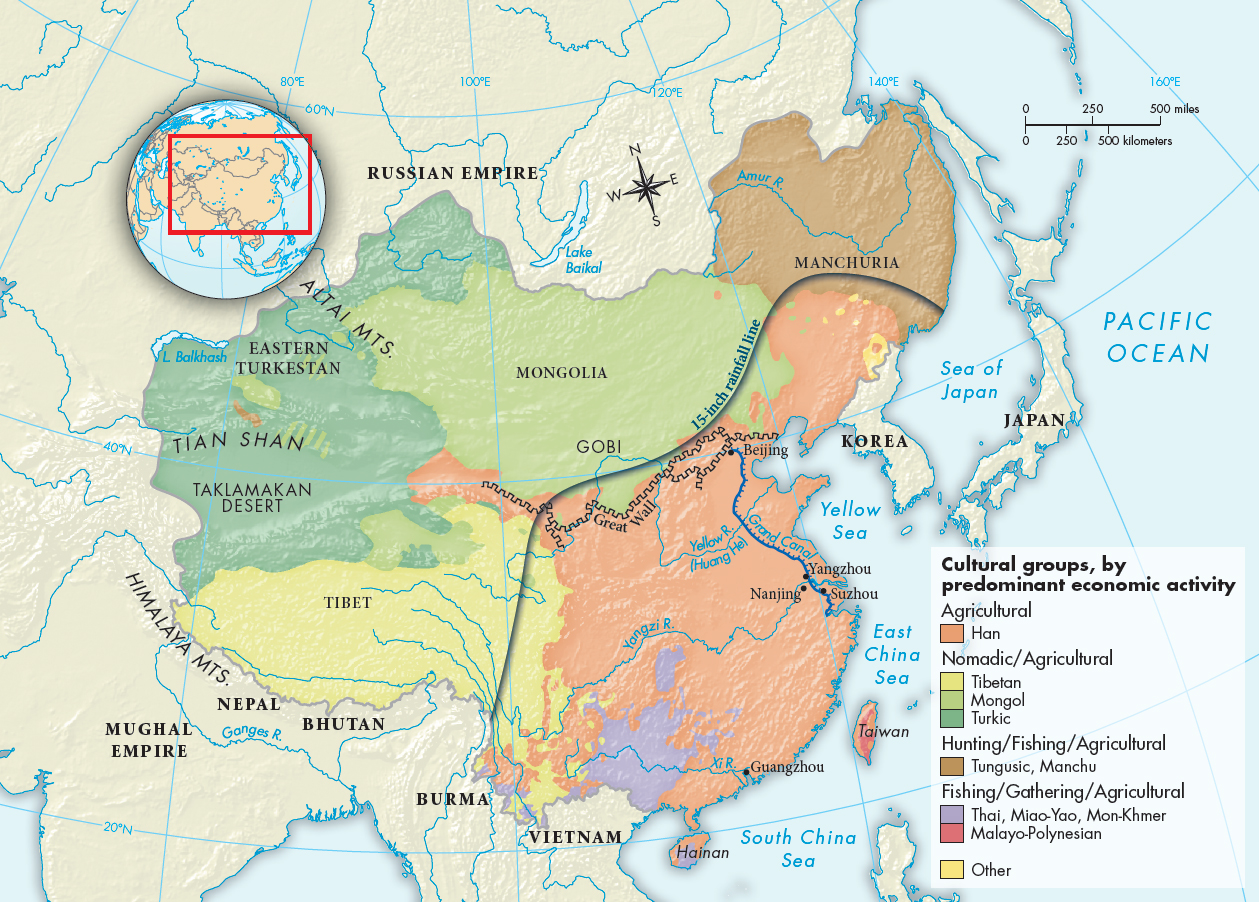Understanding World Societies:
Printed Page 620
The Rise of the Manchus
In the Ming period, the Manchus lived in dispersed communities in what is loosely called Manchuria (the northeast of modern-

ANALYZING THE MAP: How many different cultural groups are depicted? Which occupied the largest territories? Where was crop agriculture most prevalent?CONNECTIONS: What geographical and political factors limited the expansion of the Qing Empire?
The Manchus credited their own rise to Nurhaci (1559–
The Manchus entered China by invitation of the distinguished Ming general Wu Sangui, who was near the eastern end of the Great Wall when he heard that the rebels had captured Beijing. The Manchus proposed to Wu that they join forces and liberate Beijing. Wu opened the gates of the Great Wall to let the Manchus in, and within a couple of weeks they occupied Beijing. When the Manchus made clear that they intended to conquer the rest of the country and take the throne themselves, Wu and many other Chinese generals joined forces with them. Before long, China was again under alien rule.
Once securely in power, the Qing put in place policies and institutions that gave China a respite from war and disorder. Most of the political institutions of the Ming Dynasty were taken over relatively unchanged, including the examination system.
After peace was achieved, population growth took off. Between 1700 and 1800 the Chinese population seems to have nearly doubled, from about 150 million to over 300 million. Population growth during the eighteenth century has been attributed to many factors: global warming that extended the growing season, expanded use of New World crops, slowing of the spread of new diseases that had accompanied the sixteenth-